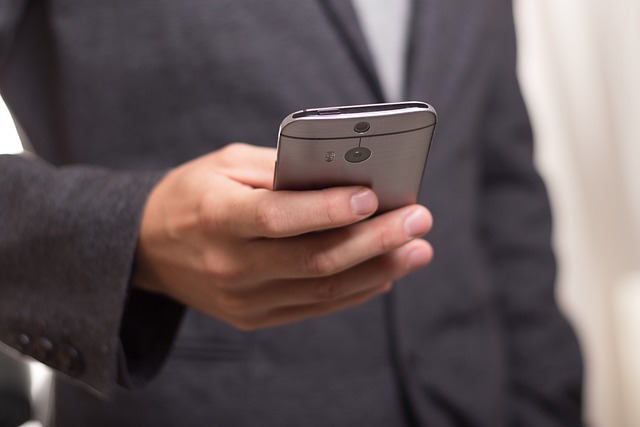Hands up who has a smartphone? All 2.71 billion of you. Now hands up if you know a) how it was made, b) how it gets rid of when you move on to the next one, and c) how it affects your health and freedom in the meantime.
That probably only five people are still holding hands is by no means a coincidence; it's good for business. Because if you'd known, you probably wouldn't have gotten it in the first place. You certainly wouldn't want to keep the one you have, although for reasons we'll get to, it may be too late for you now.
From the downright horrifying to the downright, utterly, disgustingly horrifying, here are 10 things Big Tech prefers to keep secret.
10. Smartphones are designed to fail

Although smartphones can easily last more than three years, most people get rid of them sooner. Why? It’s not as it should be, for all the reasons here, but because of planned obsolescence. It’s a business strategy that involves various methods to ensure a constant demand for new phones.
These methods include high repair costs (for example, for screens) compared to buying a new device, a shortage of original spare parts, short warranties and clever marketing. All of these approaches are largely coercive. But planned obsolescence more specifically refers to glitches built into the software or hardware of your (their) device. Apple, for example, has been accused of deliberately slowing down iPhones with an "update." They deny it, of course, but nevertheless agreed to settle the score with its customers (products) at $25 per device.
9. Your smartphone is reducing your quality of life

There are two ways to use a smartphone - consciously (researchers call it "aware") and unconsciously (unconscious). Most of us can immediately see the difference between us using technology and technology using us. It is not surprising that high levels of smartphone use in "Unawareness" mode was associated with reduced quality of life (measured by positive feelings, competence, and functioning).
What’s troubling is that smartphones aren’t a habit that affects a few, like smoking. They’re total. Hence the generational fears that have arisen in a world where smartphones have always existed. “Generation Z,” for example, or “iGen,” is dramatically different from its predecessors, the “millennials” — more dramatically than millennials were from “Generation X,” or than any other generation was from its predecessor.
One key difference is how they spend their time . Since the iPhone’s release in 2007, teens are reportedly spending less time with friends, dating, having sex, or even sleeping — and more time feeling lonely. Instead of dating, teens tend to inhabit virtual spaces online — apps and websites. And it’s not making them happy. According to a Monitoring the Future survey, those who spend more time on their smartphones and social media are far more likely to be dissatisfied with their lives.
8. Smartphone apps are intentionally addictive

How many times a day do you check your smartphone? In typical addict fashion, even hardcore addicts probably underestimate this; the average American 262 times a day What do we love so much about these little black mirrors?
Well, the truth is, it’s not our fault, or even our choice. Smartphones are addictive by design. According to app developer Peter Mezick, “the success of an app is often measured by the degree to which it instills a new habit.” Why? Because attention pays. The more time we spend on social media and other apps, the more advertising revenue their creators earn. You think about the product , and not about the buyer Former employees of Apple, Google, Facebook and others have no doubt about it.
In fact, there is now an industry standard for rewarding addiction. It is based on a model developed by Stanford psychology professor B.J. Fogg, and works by creating a stimulus around negative emotions, such as boredom or loneliness.
7. “Your” smartphone is a surveillance device

Edward Snowden famously risked his life to expose how closely the US and other governments spy on their citizens. That's one reason VPNs have become the new normal, at least for some of us. But we still have spies in our pockets. Thanks to virtually untraceable spyware All governments now have the ability to access our smartphones without our knowledge. And this is the ability they use.
It’s not just America. The Polish government has collected data from dissenting journalists’ phones to use in smear campaigns against them; the Hungarian government has deployed spyware to monitor NGOs; Greece has used it to cover up corruption; the Spanish have used it to monitor individuals involved in the Catalan independence movement… The list goes on. And it’s hardly surprising.
What is surprising is the lack of awareness of smartphone surveillance capabilities even among those most at risk. Protesters, for example, continue to carry their personal tracking devices, allowing police easy them identify and track .
6. Checking your smartphone damages your eyesight and skin

Most smartphone users don't care about their vision; either that or they're unaware of the risks. According to the Vision Council, 80% Americans look at their devices more two hours per day, and 59% experience digital eye strain. Unfortunately, this damage to the retinal cells can lead to age-related macular degeneration, cataracts, eye cancer, and growths on the whites of the eyes. To make matters worse, people tend to blink less when looking at screens. You've probably felt your eyes dry out, causing headaches.
If you think youth is on your side, beware: the opposite is also true. Children's eyes actually absorb more blue light, putting them at greater risk of disease.
But it’s not just the eyes. High levels of artificial light also stress the skin, both indirectly by disrupting sleep patterns and directly by causing oxidative stress. Research has shown that exposure to short-wavelength visible light (such as blue light) even for short periods of time can generate cell-destabilizing molecules (reactive oxygen species) and, as a result, early skin cell death. The result is accelerated aging and wrinkles But there is a silver lining: Given the collateral damage to your vision, it may be less noticeable in selfies.
5. Smartphones cause debilitating mental illnesses

The most obvious and widespread mental harm associated with smartphone use is the stress of being constantly connected. Users feel obligated to respond to every message they receive as soon as they receive it in order to maintain that connection. Research shows us what we already feel many times every day: notifications activate the sympathetic nervous system, releasing adrenaline , which in turn increases your heart rate and muscle tension. The body stabilizes again after 30 minutes, which is 30 minutes that many of us never get.
However, this is just the tip of the iceberg. Other chronic problems include sleep disturbance, cyberbullying , emotional dysregulation, depression, anxiety , cognitive impairment, low self-esteem and social avoidance .
We don't need research to tell us this, but surveys of 8th, 10th and 12th graders between 1991 and 2016 show that teenagers who spent less time communicating electronically were happier.
4. Smartphones cause you physical pain

We've already mentioned how blue light can damage your eyes and skin. It gets worse. By disrupting your circadian rhythm and worsening the quality of sleep , it can also contribute to obesity, diabetes, heart disease and cancer. Manual labor associated with smartphone use (unnatural repetitive movements of the arms and neck) can also lead to trapezius-metacarpal osteoarthritis And neck strain In fact, the strain force on your neck is 40 pounds at 30 degrees and 60 pounds at 60 degrees—the equivalent of having a baby sitting on the back of your neck every time you look at your phone.
But it's not just the blue light; it's also the impact electromagnetic fields with radio frequency modulation (RF-EMF). Just 50 minutes of talking on a cell phone has been found to increase glucose metabolism in the brain in the area closest to the antenna. And while it is unclear what harm this may cause (including the developing brain of young people ), RF-EMF radiation has been linked to cancer, and phone use has been linked to an increased risk of brain tumors. Even in everyday life, because RF-EMF frequencies sometimes match frequencies in neural tissue, there are concerns that they may interfere with knowledge . Even tiny interferences can have a butterfly effect. It has also been shown that EMFs can penetrate cells and interact with mitochondrial DNA, eventually damaging it through oxidative stress. At the very least, this can lead to hypersensitivity to electromagnetic fields .
And while it's easy to forget when you're looking at your smartphone, we still share this world with other creatures, many of whom have been affected by the surge in electromagnetic radiation. There is a lot of evidence harming ants, birds, frogs, bees, rodents, plants and other animals. Bees, for example, when exposed to cell phone EMF for just 10 minutes a day for ten days do not return to their hives. This is because they rely on the Earth's magnetic field to navigate.
3. Smartphones are assembled in sweatshops

Worker (and human) rights abuses at FOXCONN in China, where Apple and Sony make their phones, are relatively well known — and are completely unresolved. Workers are still paid less than they need to, even for overtime (which is often unpaid as a punishment for not meeting quotas). They are also exposed to toxins without protection, and lied to and their managers abuse them (who, for example, promised double pay for increased production, but ended up paying only the standard). If they want to resign, they have to ask permission, and permission is often denied. In other words, they are slaves. So it is not surprising that suicide is common there.
But it's not just FOXCONN, Apple or Sony. All smartphones depend on cheap labor. Another example is Samsung sweatshops in Vietnam , where miscarriages among the largely female workforce are common and expected. They spend most of their time, even during pregnancy, standing, causing dizziness and fainting. Neither toxic fumes nor the chaotic mix of day and night shifts help. Even “free time” is painful, as the factory dormitories deliberately isolate mothers from their families.
2. Children die mining cobalt for batteries

More than half of the world's cobalt, which smartphone makers rely on for their batteries, comes from hand-dug mines in the Democratic Republic of Congo. These places, euphemistically known as "artisanal mines" (AMs), are a living hell on earth.
The true extent of the horror is unclear because much of it hidden But what we do know paints a chilling picture. Tens of thousands of children as young as seven, all for less than $2 a day, work up to 12 hours a day, carrying heavy loads, breathing toxic dust and contracting skin diseases underground. Accidents are common, resulting in the loss of limbs and lives, and many bodies remain buried under rubble.
And while big brands claim to be against child labor, the truth is that they would be smaller without it. So it’s no surprise that, according to Amnesty, they they don't even research suppliers . After all, since few smartphone users in the developed world actually care about this, there is very little pressure on them. The problem is now so entrenched that “ethical” smartphone alternatives such as Fairphone , Not can separate Cobalt supplied by ASM from other sources.
1. Smartphones are ruining the planet

While using your smartphone may seem relatively carbon neutral—at least between charges—the data centers needed to process all that information consume a ton of energy. So do phone towers. In the U.S. alone, 4G consumes 31 million megawatt-hours of electricity a year, enough to power 2.6 million households . 5G is expected to use three times more.
Beyond that, manufacturing and especially mining have an even bigger impact. Mining (not just cobalt, but all the associated materials, including gold and silver) accounts for up to 95% of your smartphone's total carbon footprint over its lifetime... which isn't very long.
Once you're done with it, it will continue to wreak havoc on the planet. The amount of discarded electronics (or "e-waste") in 2016 alone reached 43 million tons , equivalent to 4,500 Eiffel Towers. But it's out of sight, out of mind for most Americans. Hell's Dumps electronic waste are located far away in developing countries, in China, Vietnam, India, Pakistan, Nigeria, Ghana and other countries where there are no rules.













Оставить Комментарий